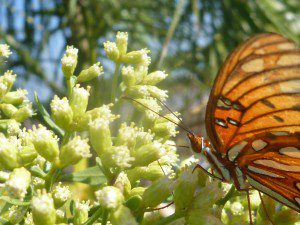Mike Plummer WFSU-TV

 An atlas is a very handy book. At the very least it will show you how to get “there” from “here”. The new Atlas of Florida’s Natural Heritage does much more than that. It’s like a guide to the geography and biology of Florida in the present and through time. Besides feeding a curiosity about particular animal or plant species, it also explains how communities of Florida’s animals and plants are interconnected in and with specific locations. The word “Heritage” in the title is very deliberate. The idea is that these wild natural resources we have in Florida have real value and should be shared for the benefit of all Floridians and passed along to future generations. And in many cases the health of these natural communities has a direct impact on our own health and well-being. Written with economy and loaded with graphic illustration and photography to explain the subject matter, this book is just plain fun to look through. It’s the kind of book you can pick up off the coffee table and spend 10 minutes with and you will have learned something new about the wonderful state of Florida. If you want to know more about the Atlas of Florida’s Natural Heritage, you can take a few pages for a test drive at:
An atlas is a very handy book. At the very least it will show you how to get “there” from “here”. The new Atlas of Florida’s Natural Heritage does much more than that. It’s like a guide to the geography and biology of Florida in the present and through time. Besides feeding a curiosity about particular animal or plant species, it also explains how communities of Florida’s animals and plants are interconnected in and with specific locations. The word “Heritage” in the title is very deliberate. The idea is that these wild natural resources we have in Florida have real value and should be shared for the benefit of all Floridians and passed along to future generations. And in many cases the health of these natural communities has a direct impact on our own health and well-being. Written with economy and loaded with graphic illustration and photography to explain the subject matter, this book is just plain fun to look through. It’s the kind of book you can pick up off the coffee table and spend 10 minutes with and you will have learned something new about the wonderful state of Florida. If you want to know more about the Atlas of Florida’s Natural Heritage, you can take a few pages for a test drive at:
www.floridasnaturalheritage.org
